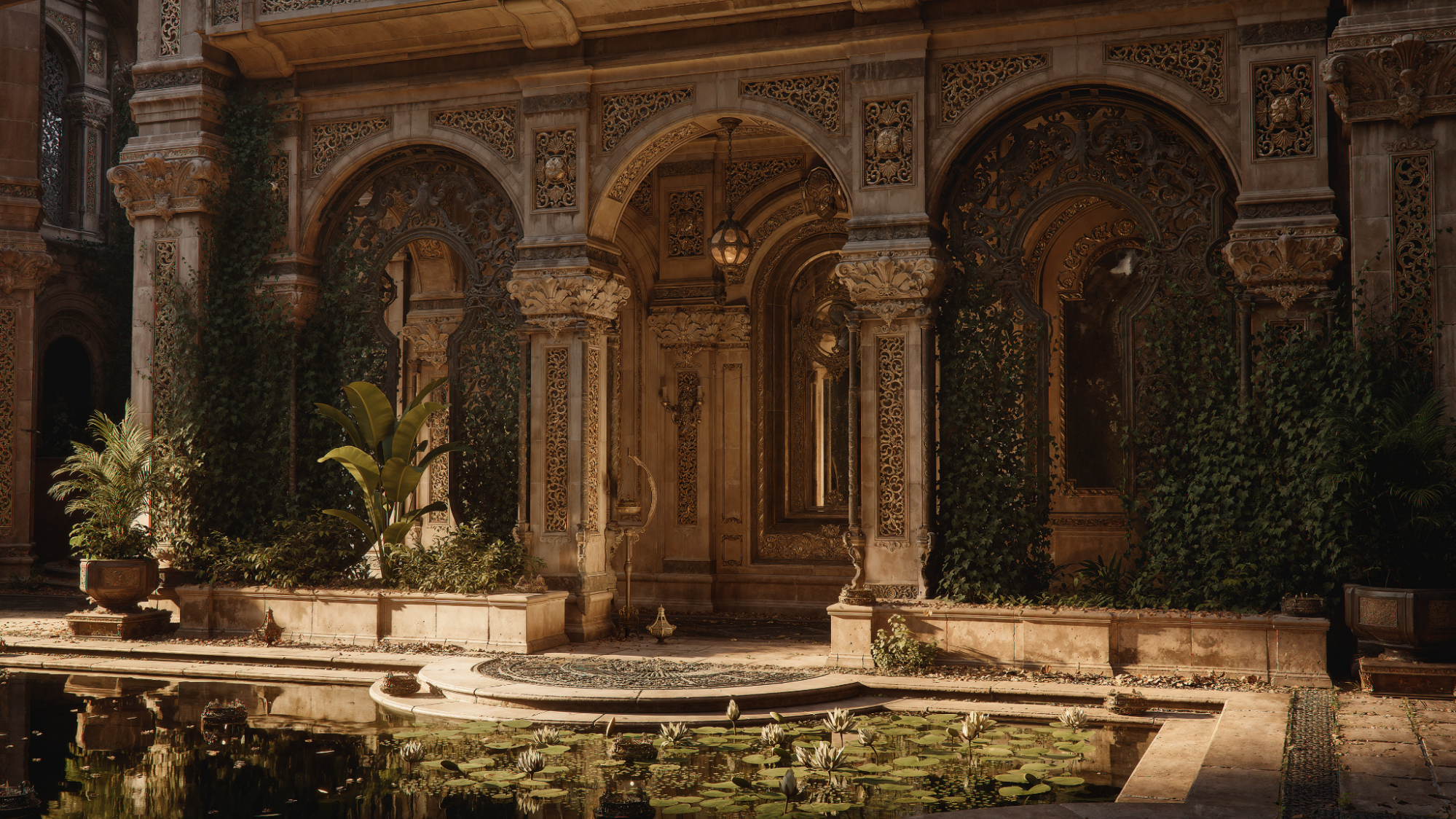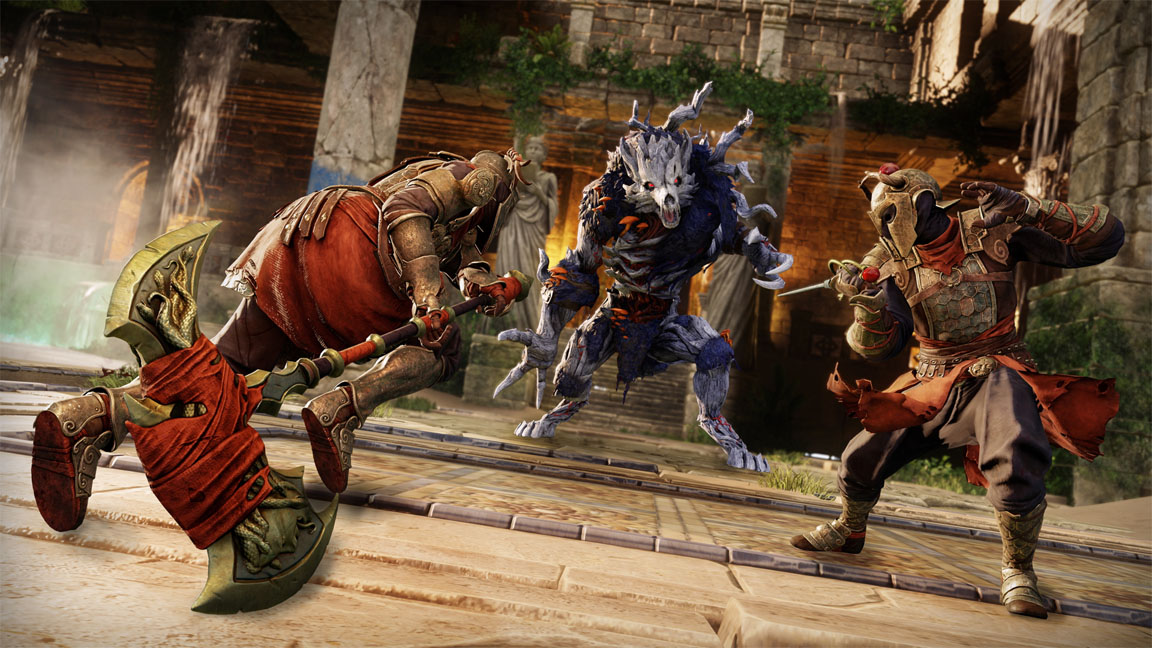
Publisher Amazon Games
Developer Amazon Orange County
Release 15 October
Formats PC, PS5 Xbox Series X/S
We recently caught up with the New World: Aeternum art team where they shared how the complex environments for the game are designed. Now it's the turn of the creature designers, and just like the world, these monsters are created from a mix of myths, legends and real world creatures, spanning various cultures.
Below, associate art director Sojin Hwang takes us through the process the team used to craft the creatures of Aeternum, as well as how the designs have been created to fit the complex, cultural mix that makes up the unique world of Amazon's online RPG.
I interviewed Sojin Hwang previously, with the original launch of New World back in 2021, where we caught our first sight of this uniquely complex game world. Aeternum is a new release, updating the original game on PC with new content and a visual refresh, while also now releasing on PlayStation 5 and Xbox Series X/S for the first time. (Don't have a games console? Read our best games consoles guide to see which is for you.)
Ahead of release, read Sojin's interview below and get a unique insight into what it takes to make a Triple-A game and its creature design. The game releases 15 October, visit the New World website for more details.
What were your main influences and inspirations for the creature designs?
Sojin Hwang: The creature designs can be influenced by a blend of mythical and real animals, drawing inspiration from a wide range of sources. Mythical creatures from various cultures provided a rich foundation, allowing us to incorporate fantastical elements and symbolism into our designs. While real animals also played a significant role, providing anatomical accuracy and behaviours that ground the creatures in reality. We studied various species, examining their movement, textures, and ecological adaptations, which helped us create more believable and engaging creatures.
By combining these influences, we aimed to develop designs that feel both imaginative and relatable, enriching the game world with diverse and compelling life. This mix allowed us to come up with creatures that are not only visually striking, but also deeply connected to the themes and narratives of the game.
For Aeternum, we introduced several new creatures, with two notable ones - the Broodmother and Echidna - appearing as bosses in Hive of Gorgons, our first-ever raid. We’re extremely proud of their unique and terrifying designs.
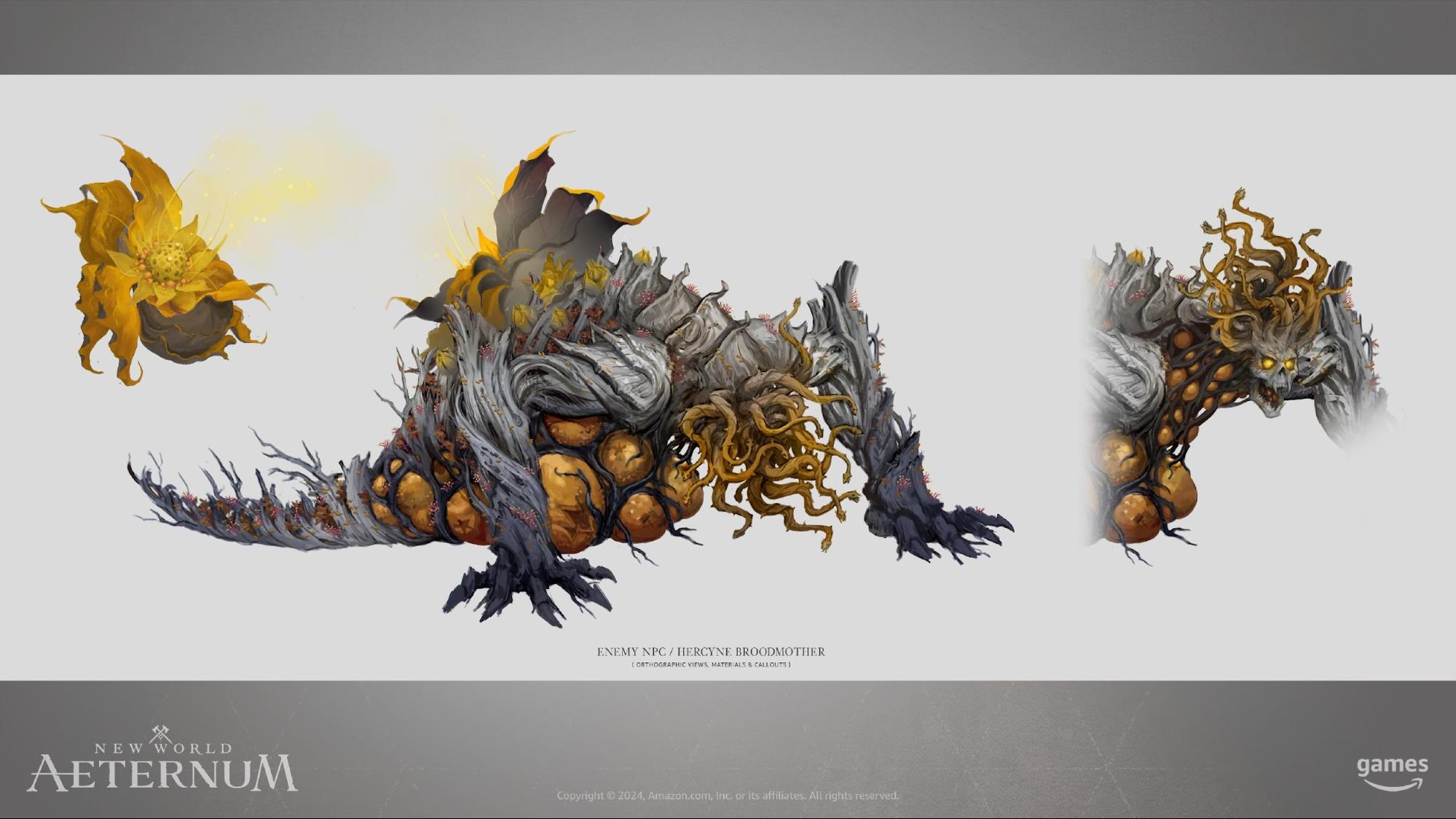
Broodmother is a re-created and changed form of Medusa who players encounter earlier in-game. However the only aspect we kept was some snake-like features. The artist wanted to create the illusion of a creature rotting into the undergrowth. The treatment of the wood on her design was inspired by some dead trees the artist found when hiking in Moab, Utah. The initial sketches were more loose and alien, inspired by various insects and arachnids. We also looked at mollusks, Venus flytraps, tadpole eggs, and different gross fungi for reference.
In the end, the design team needed the boss to be a large slug-like creature with two arms and a flower on her back, and the narrative team requested that she look more distinctly "Hercyne" with references to her past as Medusa. This narrowed the options quite a bit, so we scrapped the insect-like options to refine the idea.
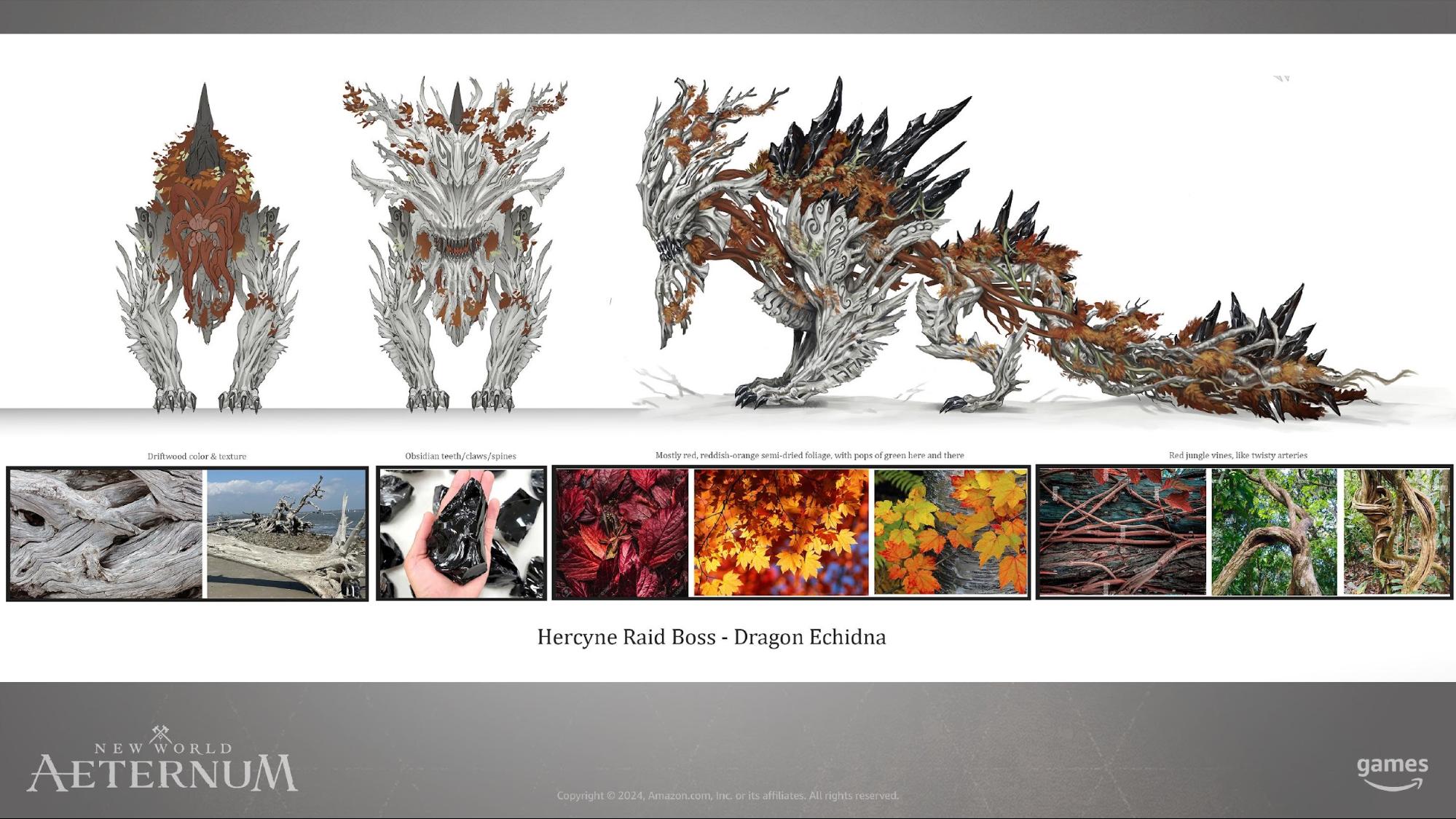
With Echidna we used an existing rig, so we needed something that roughly matched those proportions while simultaneously standing out as its own creature. Instead of opting for an enemy more lizard/dragon-like, because of the Angry Earth influence, we wanted to push for something more monstrous and alien, using abstract shapes pulled out of vegetation. The artist was inspired quite a bit by driftwood, much like the Broodmother, tree stumps and roots, and the way jungle vines wind their way through branches.
Get the Creative Bloq Newsletter
Daily design news, reviews, how-tos and more, as picked by the editors.
The artist envisioned this creature as a wood-and-vine construct, not green and lively but ancient and greying, its branches worn, with sharp obsidian stones adding balance in color and texture. Echidna’s design incorporates worn branches and sharp obsidian stones, which provide a striking contrast in colour and texture, enhancing the overall monstrous appearance. This blend of organic and abstract elements aimed to evoke a sense of both beauty and terror, making this first boss in Hive of Gorgons a compelling presence in the game.
How does the lore of the game reflect a creature’s design?
Sojin Hwang: The lore of the game plays a crucial role in shaping a creature's design by providing context, its history, and role in the narrative, and environmental context that influence visual and functional aspects. For instance, a creature's origins, a specific myth or legend might feature design elements that echo cultural symbols or historical motifs, making it feel more integrated into the game world.
Lore could also influence a creature's role within the game world – whether it's a fierce predator, a mystical guardian, or a misunderstood being – affecting its features and animation styles. For example, a creature tied to ancient mythology might have intricate designs that echo cultural motifs, while one rooted in a harsh, survivalist narrative might have rugged, worn characteristics
Lore could also influence a creature's role within the game world affecting its features and animation styles
Sojin Hwang, associate art director
Sometimes, a creature's design can also inspire narrative elements. Unique physical traits may lead to specific lore developments, such as explaining why a creature has certain abilities or behaviours based on its appearance and enhancing both its design and narrative significance.
Overall, a well-developed lore enriches the design process, ensuring that every creature feels integral to the world and resonates with players on a deeper level. This close relationship between the lore and concept design ensures that creatures are not only visually compelling, but also meaningful within the game's context, creating a richer, more immersive experience for players as they engage with the world.
What is the process for designing a new creature?
The process of designing a new creature is both collaborative and iterative, beginning with a brief that outlines the creature's role and characteristics, which serves as a foundation for brainstorming and exploring diverse ideas through initial sketches and mood boards.
Once the design team completes the Creature Design Document (CDD), we hold a detailed meeting to clarify aspects of the design and align on goals. Concept artists then gather reference images to develop a cohesive look for the creature, and after establishing a rough direction, we communicate with the design team for feedback. Once consensus is reached on the final design, we get together again to finalise details, ensuring alignment on the creature’s appearance, behaviours, and technical constraints.
Designing a new creature is a complex and multifaceted effort. It requires not only creativity but also collaboration and attention to detail. We dedicate significant time and effort to ensure that every creature looks unique and fits harmoniously within the game world. Our ultimate goal is to create memorable designs that enhance the player’s experience, making each encounter with a new creature exciting and engaging.
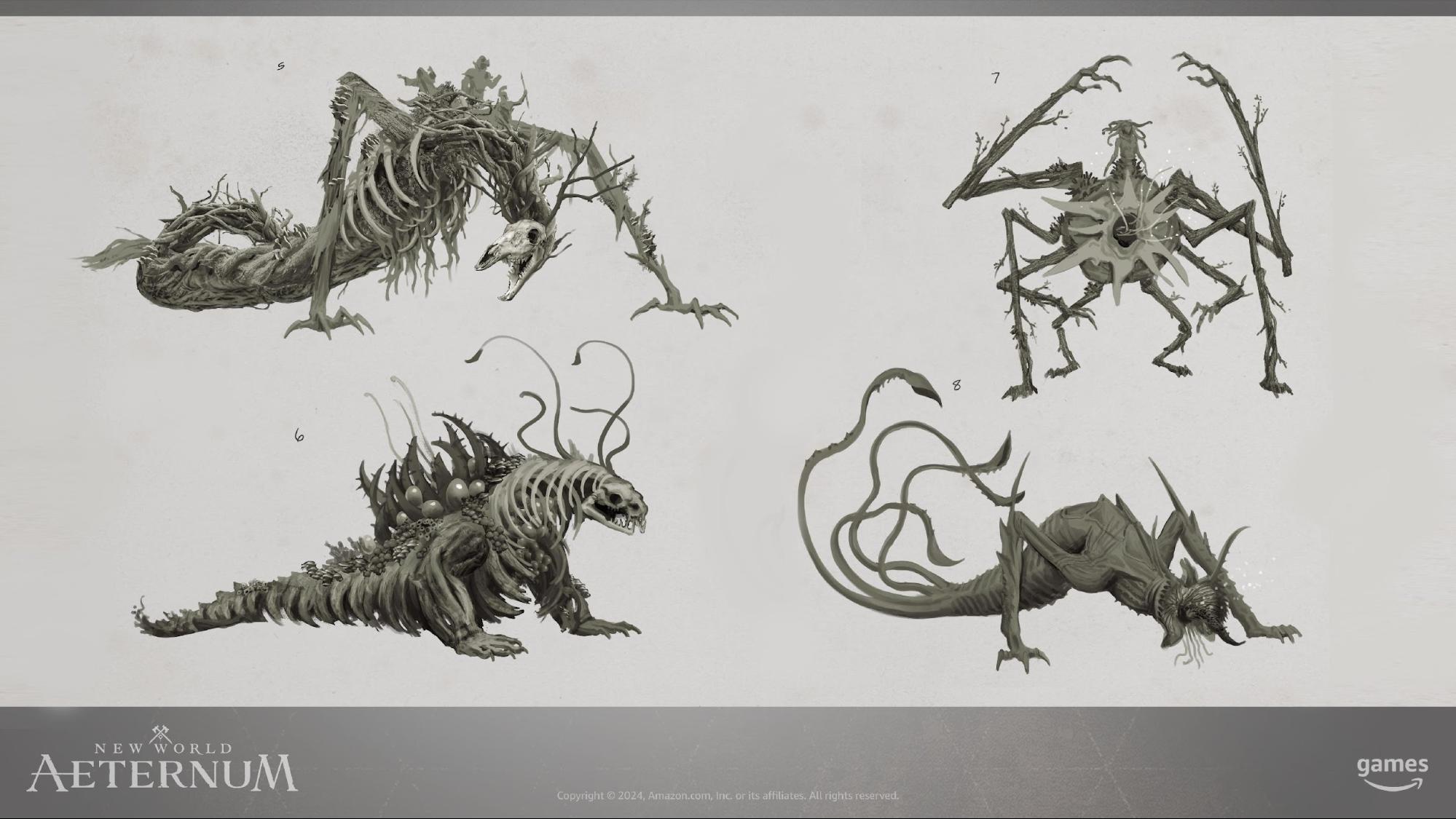
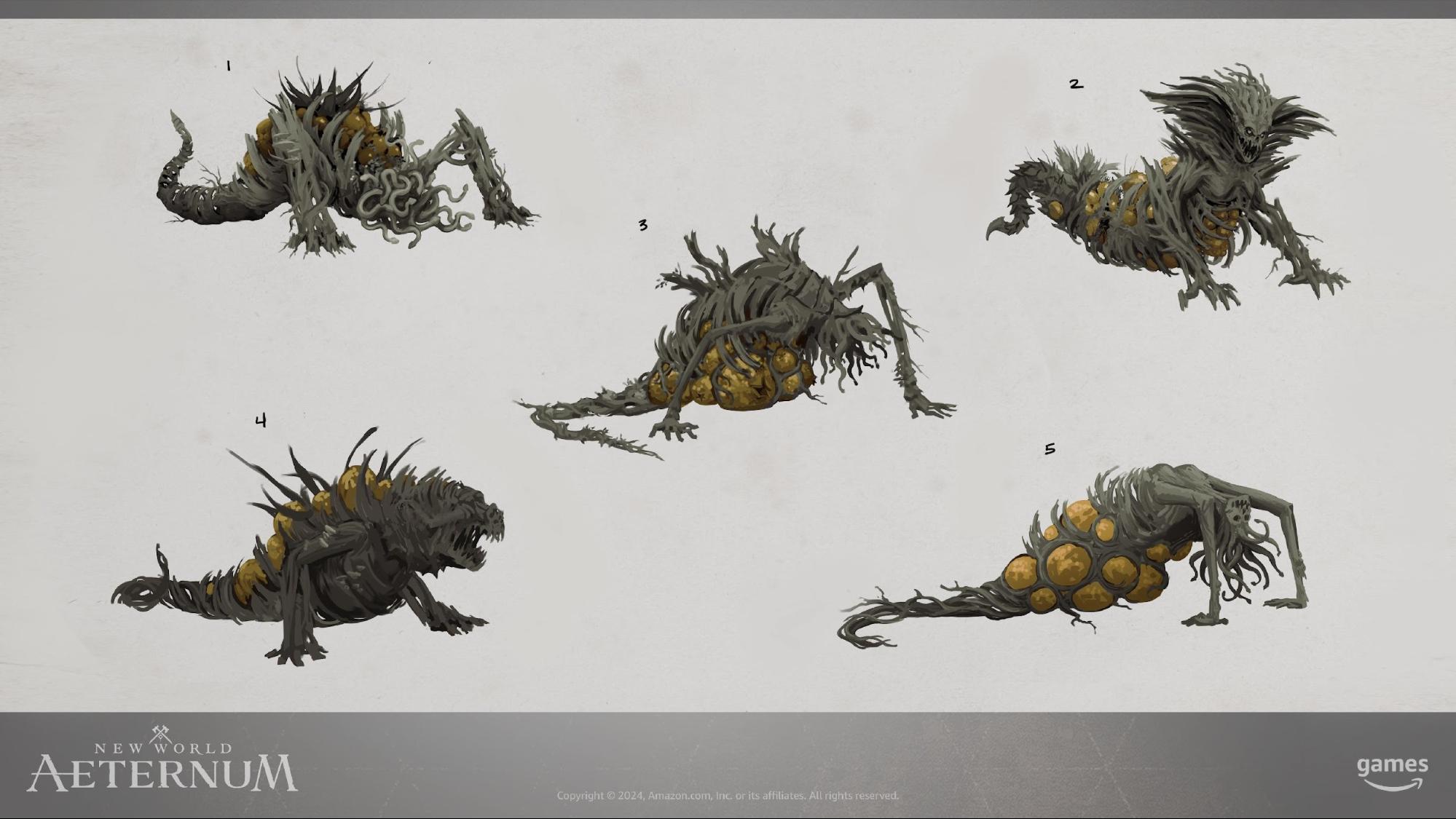
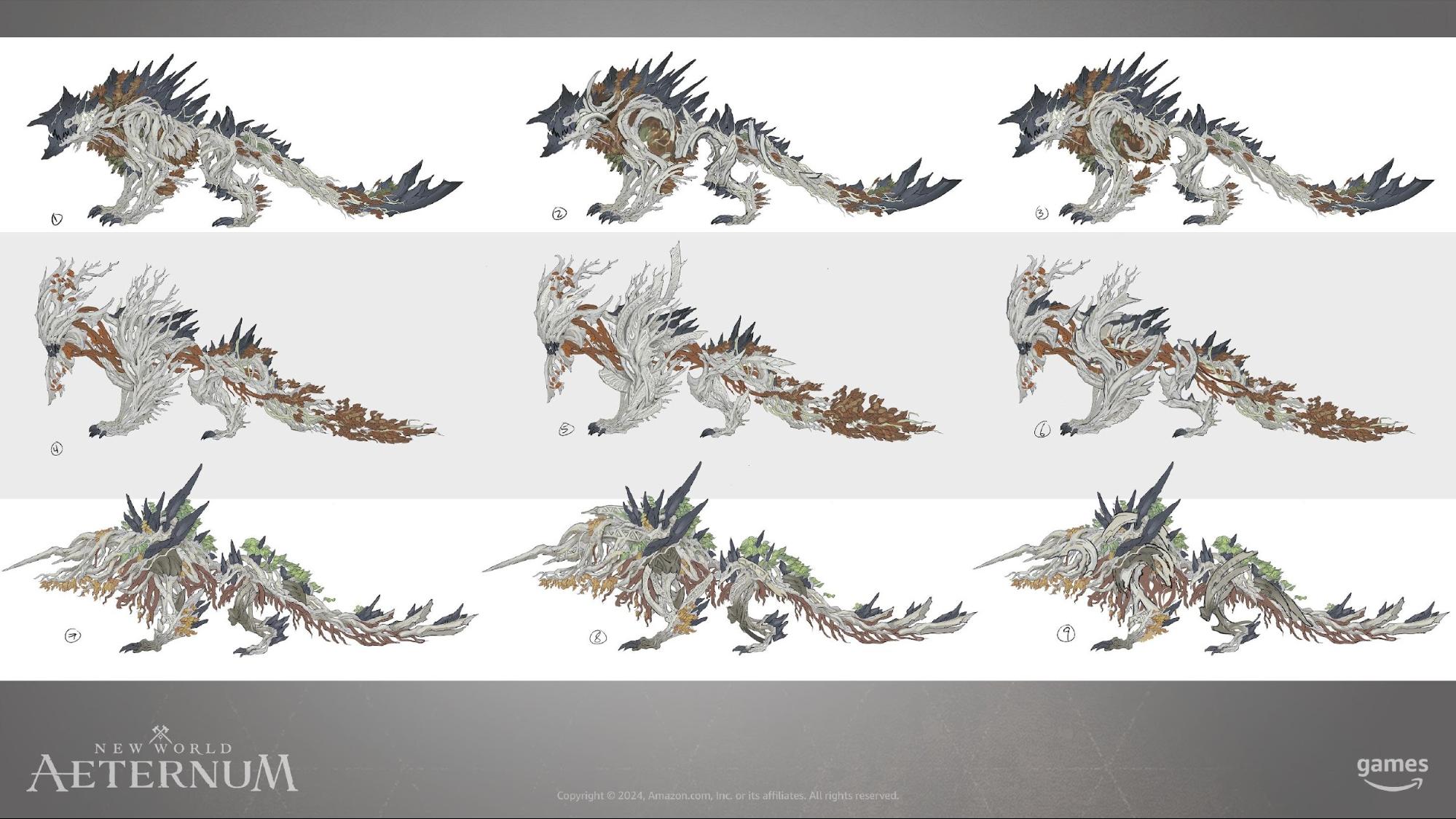
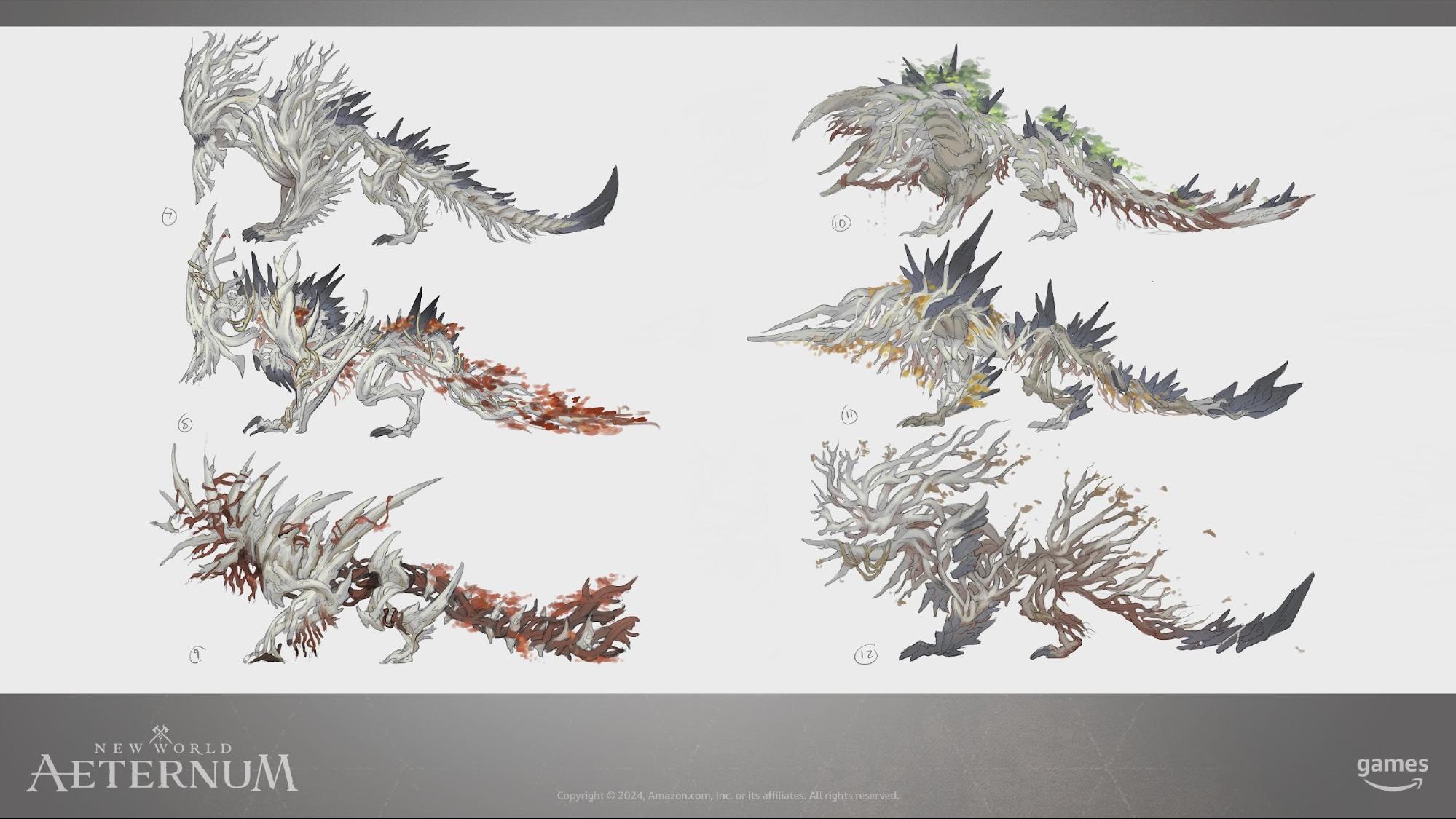
Are there any technical constraints on a new design?
Sojin Hwang: Every creature comes with its own unique technical challenges. We try to anticipate them as much as possible but sometimes issues arise unexpectedly. When it does, we just need to remain open minded and flexible. However, it is important to identify those issues earlier in production such as the concept design phase, as it is easier to iterate on paper than in 3D phase.
When designing unique boss creatures like Echidna, we faced several technical constraints that significantly influenced our approach. For Echidna, we utilised the sulfur dragon rig, which required us to create a design that not only matched its proportions, but also ensured that she stood out as a distinct entity.
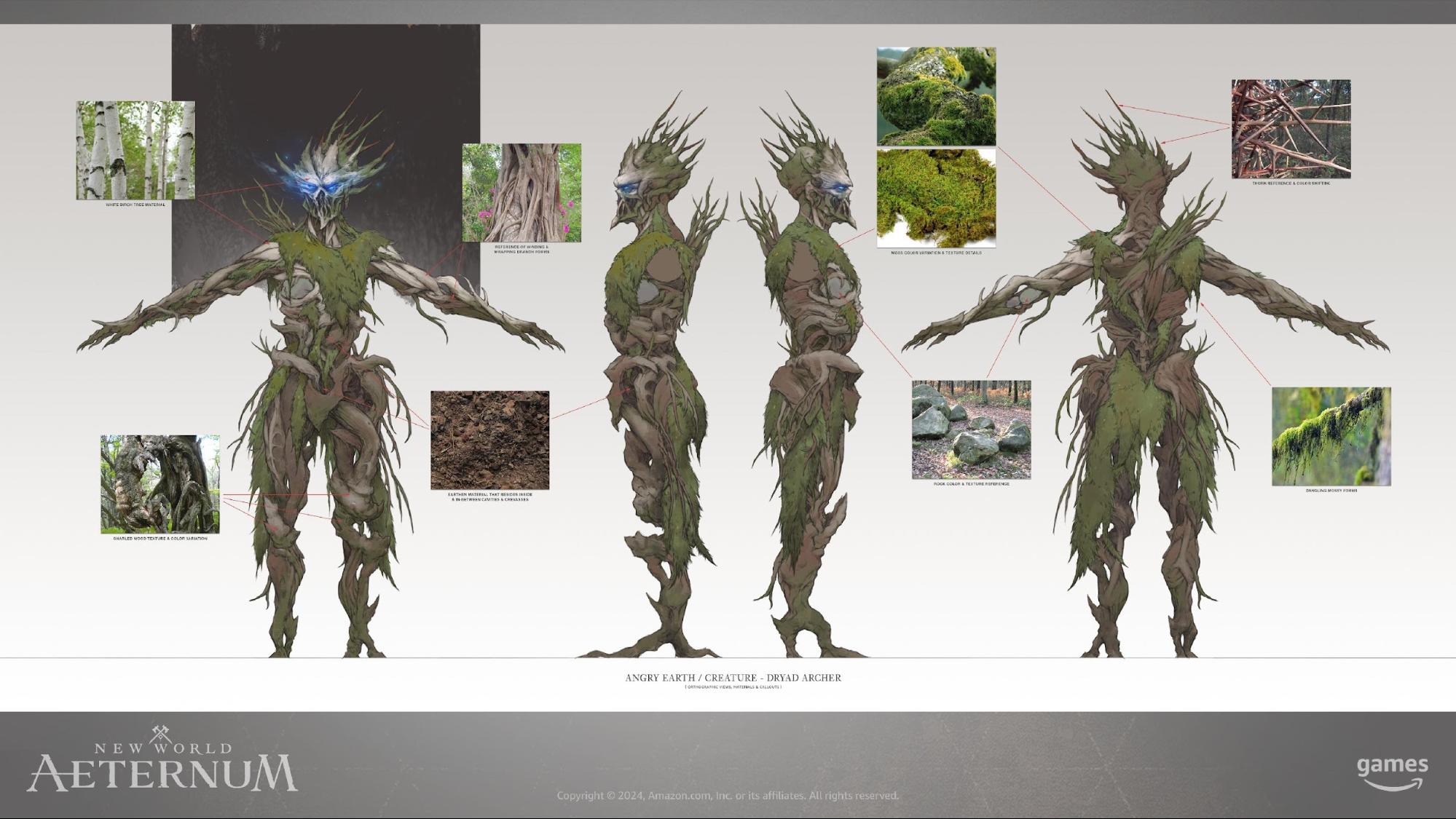
One of the primary challenges revolved around the shape of her head. We aimed for a dramatic silhouette that resembled a large shield when viewed from the front, which necessitated close collaboration with the Tech Art team to ensure we could achieve that vision. We found out that with the large head, its chin clipped into the ground due to the rig's posture. To address this, we conducted multiple block-out tests to refine the head shape and determine the optimal size that conveyed the desired shield effect, while still accommodating the existing animation rig.
This iterative process was essential in navigating the technical challenges, and ultimately achieving a successful and visually striking design that fit seamlessly into the game's mechanics.
How do you make sure a new creature feels distinct but also fits into the world of the game?
Sojin Hwang: To ensure that a new creature feels distinct while fitting seamlessly into the game world, we focus on several key techniques that promote consistency and originality. At the outset of the design process, we emphasize the importance of originality, encouraging the concept team to think outside the box and aim high during the initial exploration phase. This approach allows for a broad range of ideas to be generated, fostering creativity and innovation.
Once we have a variety of concepts, we carefully reference the established art pillars of the game. These pillars serve as guidelines that help maintain a cohesive visual language across all creatures, ensuring that even the most original designs align with the overall aesthetic of the game world.
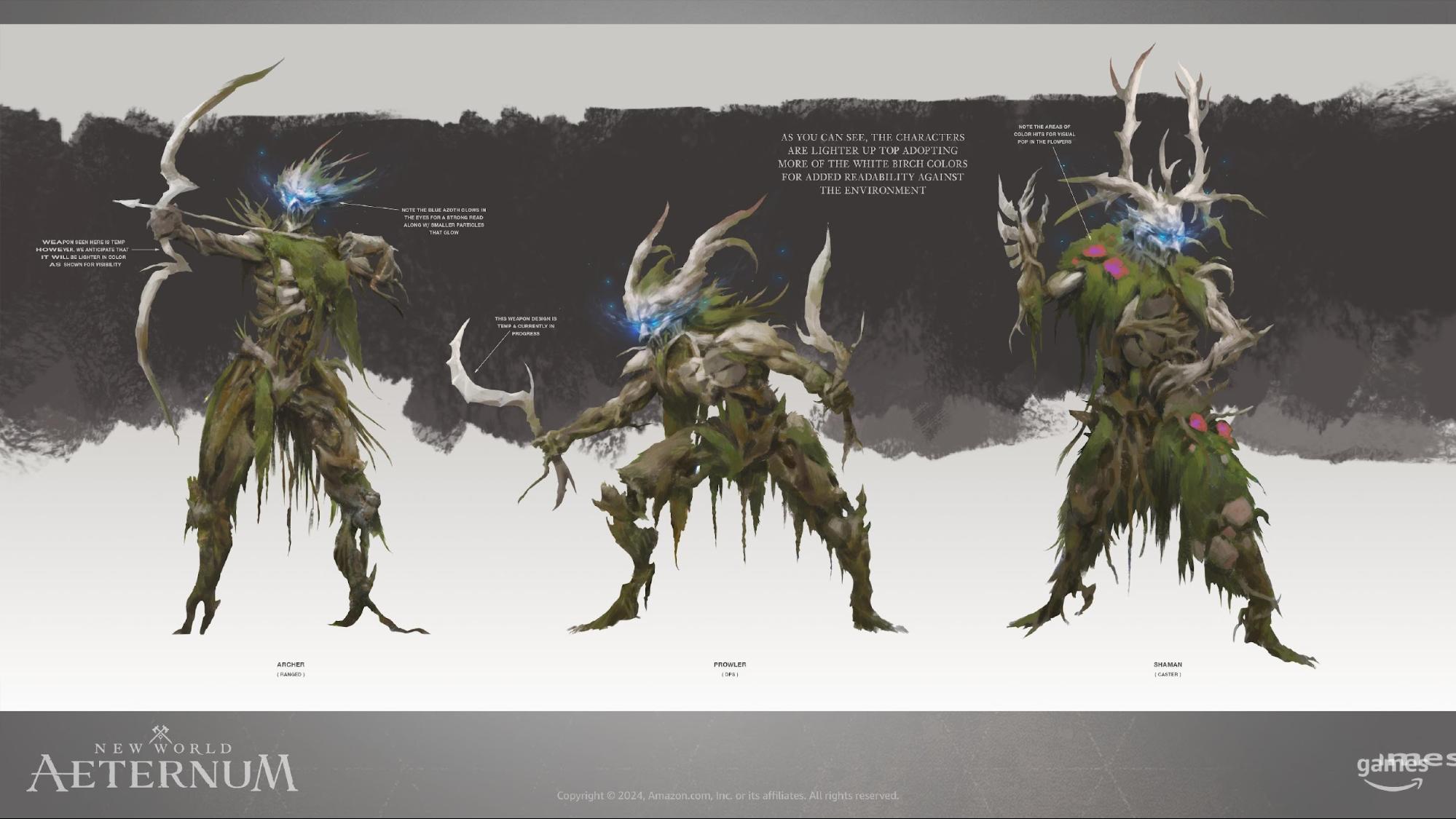
Throughout the iterative design process, we continuously evaluate how each creature interacts with existing elements, such as environmental design, color palettes, and thematic motifs. This helps us refine our concepts, striking a balance between uniqueness and integration.
Ultimately, by fostering an environment of creative exploration while adhering to our art pillars, we can create memorable creatures that feel fresh and distinctive, yet remain true to the essence of the game world.

What challenges did you face when creating a new creature design?
Sojin Hwang: Creating a new creature design involves several challenges, particularly related to its environment and technical constraints, like which rig it will be on. One significant challenge is ensuring that the creature’s design is appropriate for its environment and its family. For example, we have Angry Earth creatures intended to inhabit a dense jungle that will need adaptations that reflect its surroundings and thick foliage.
At the same time, we don’t want them to get lost or go unnoticed against their environment. This necessitates a deep understanding of both the creature's origin and the ecological context in which it exists.
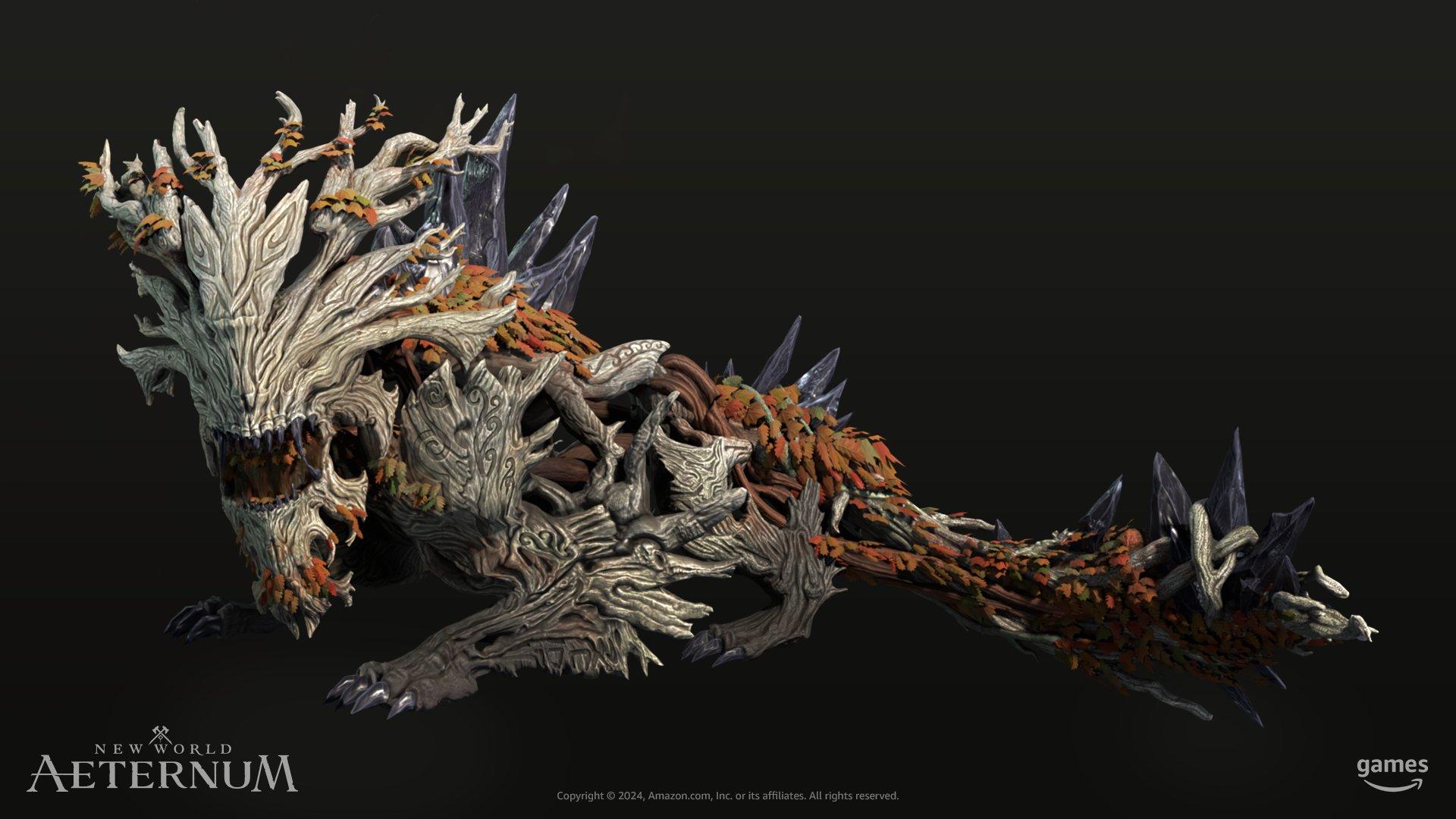
We try not to worry about the file size and performance constraints in the concept design process as we don’t want to limit artists’ creativity, but we do stay mindful about including too much or micro details. We also stay flexible with some boss creatures, as we want them to look impressive and have more presence in the game.
Overall, balancing unique visual characteristics with these constraints can be challenging. We strive to create creatures that stand out, but we also need to maintain consistency in quality and performance across the game. This requires constant iteration and collaboration with the technical team to ensure that our designs are both innovative and feasible, ultimately leading to creatures that are not only visually compelling but also function effectively within the game's technical framework.
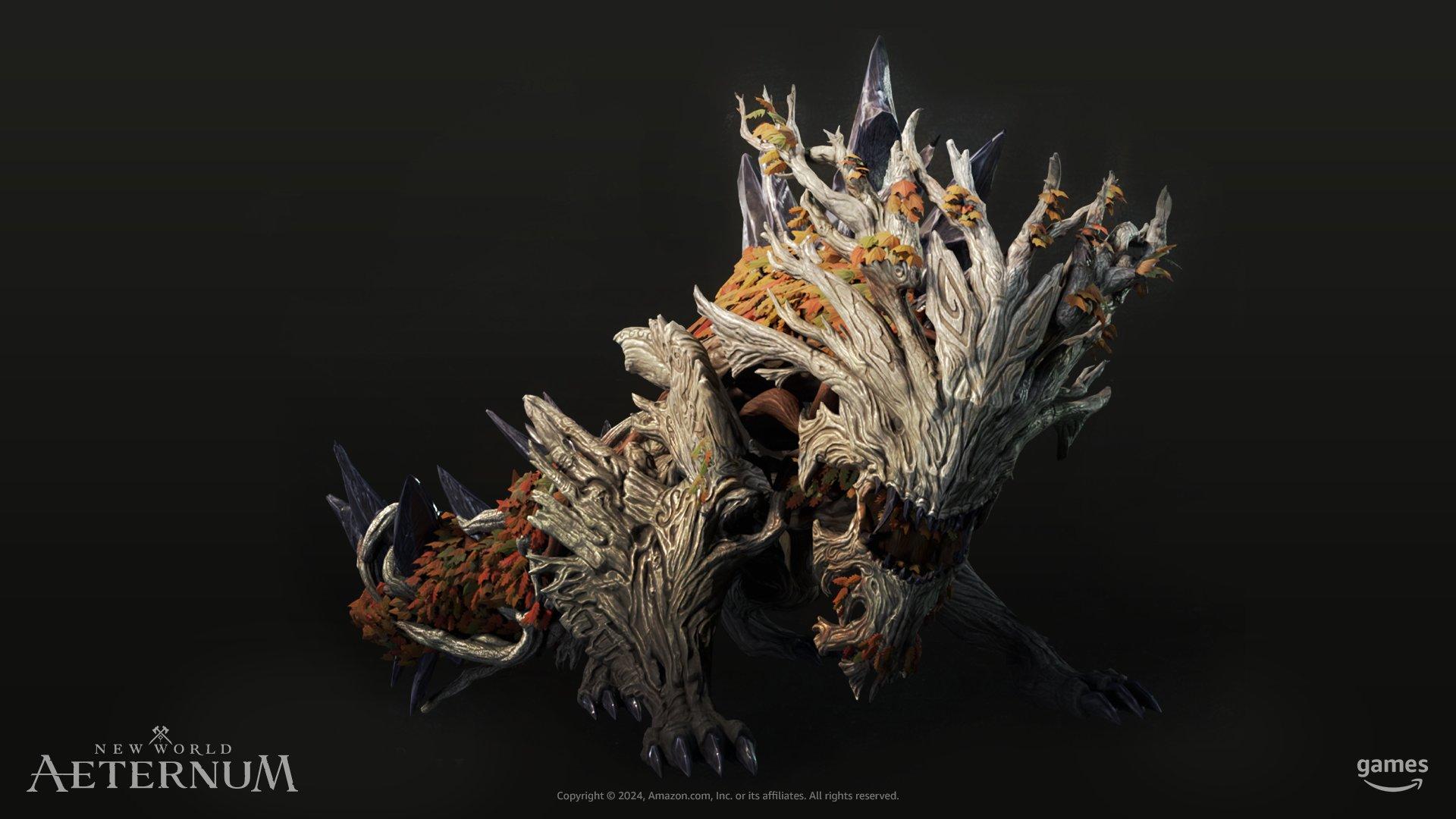
How closely do you work with other teams?
Sojin Hwang: Collaboration with other teams is essential to the concept design process. We work closely with various departments, including narrative, creature design, animation, and technical art, ensuring that all aspects of a creature’s design align with the overall vision for the game.
This collaboration greatly influences our designs in several ways. For instance, feedback from the AI design team helps us understand how the creature will function within the game, which informs its physical appearance and behaviours. Similarly, insights from the animation team guide us in creating designs that are not only visually striking but also feasible for animation, allowing for smooth and engaging movements.
Technical artists play a crucial role in ensuring that our designs are compatible with performance requirements. Their input helps us balance visual complexity with efficiency, allowing us to create detailed and immersive creatures without compromising game performance.
By fostering open communication and collaboration among teams, we ensure that our designs are cohesive, innovative, and well-integrated into the game world. This collaborative approach ultimately enhances the quality of the creatures we create, making them more compelling and functional within the gameplay experience.
Do you have a new favorite creature design?
One of my favorite creature designs is the Broodmother, which stands out for its complexity and originality. This creature blends reptilian traits with organic elements, featuring a stubby, snake-like tail that drags along the ground, spreading a caustic, pollen-laden ooze. The upper half resembles a robust, bloated lizard, subtly reminiscent of the classic Medusa.
A key aspect is the large bud-like structure on her back, enhancing her Angry Earth origin. The ooze not only creates gameplay hazards by covering the area but also facilitates the growth of Hercyne Pods, spawning new threats. This design integrates visually striking elements with engaging mechanics, making the Broodmother a memorable and formidable presence in the game.
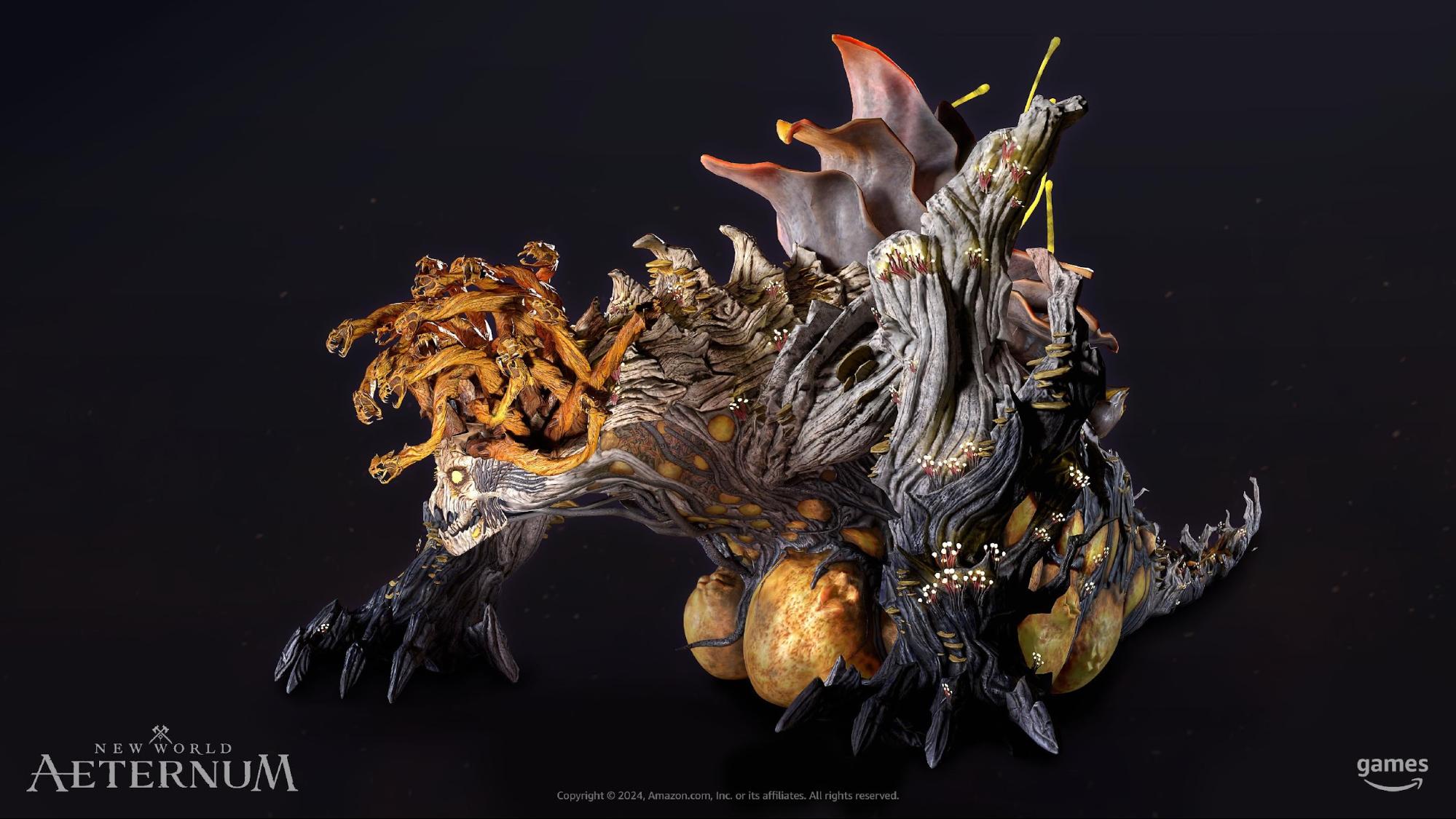
Are there artists you admire who have changed how creature design is done and you’d recommend every artist studies?
Sojin Hwang: There are several artists whose work has significantly influenced creature design, and whom I would recommend every aspiring creature designer study.
Carlos Huante and Paul Richards are two of my all-time heroes and old-school creature artists who inspired me when I was starting out in creature design. Their dynamic and stylistic approaches to creature and character design have influenced many artists, highlighting the importance of strong shapes and silhouettes in creating memorable designs. Recently, I discovered two 3D creature concept artists, Sadan Vague and Luke Starkie, who utilise 3D tools to create some of the most dark, twisted, and horrifying yet unique creatures I've ever seen.
Studying the works and techniques of these artists can provide invaluable insights into creature design, from the importance of anatomy to the role of storytelling in visual concepts. Each of these artists has brought a unique perspective to the field, making their work essential for any serious creature concept designer to explore.
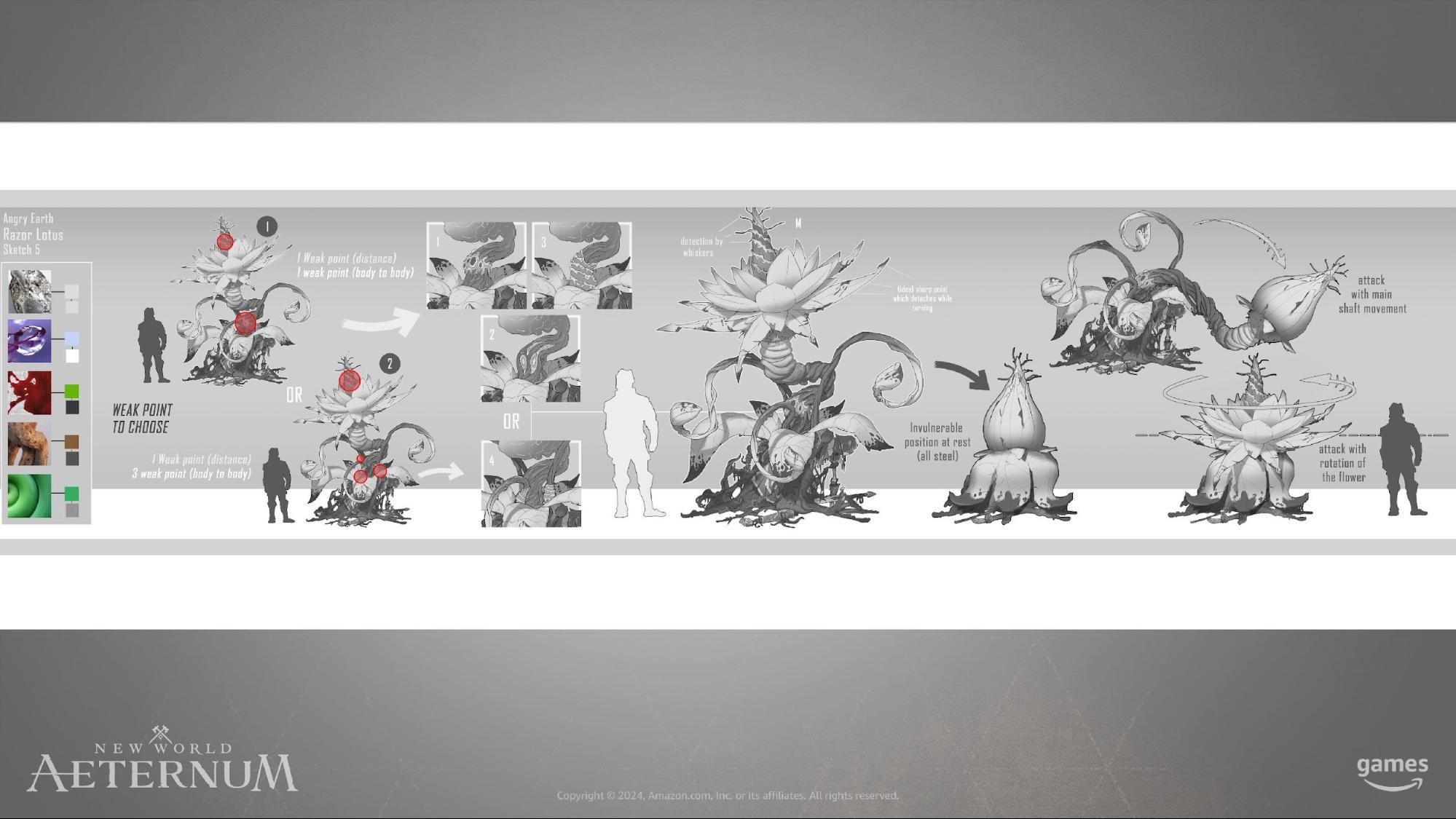
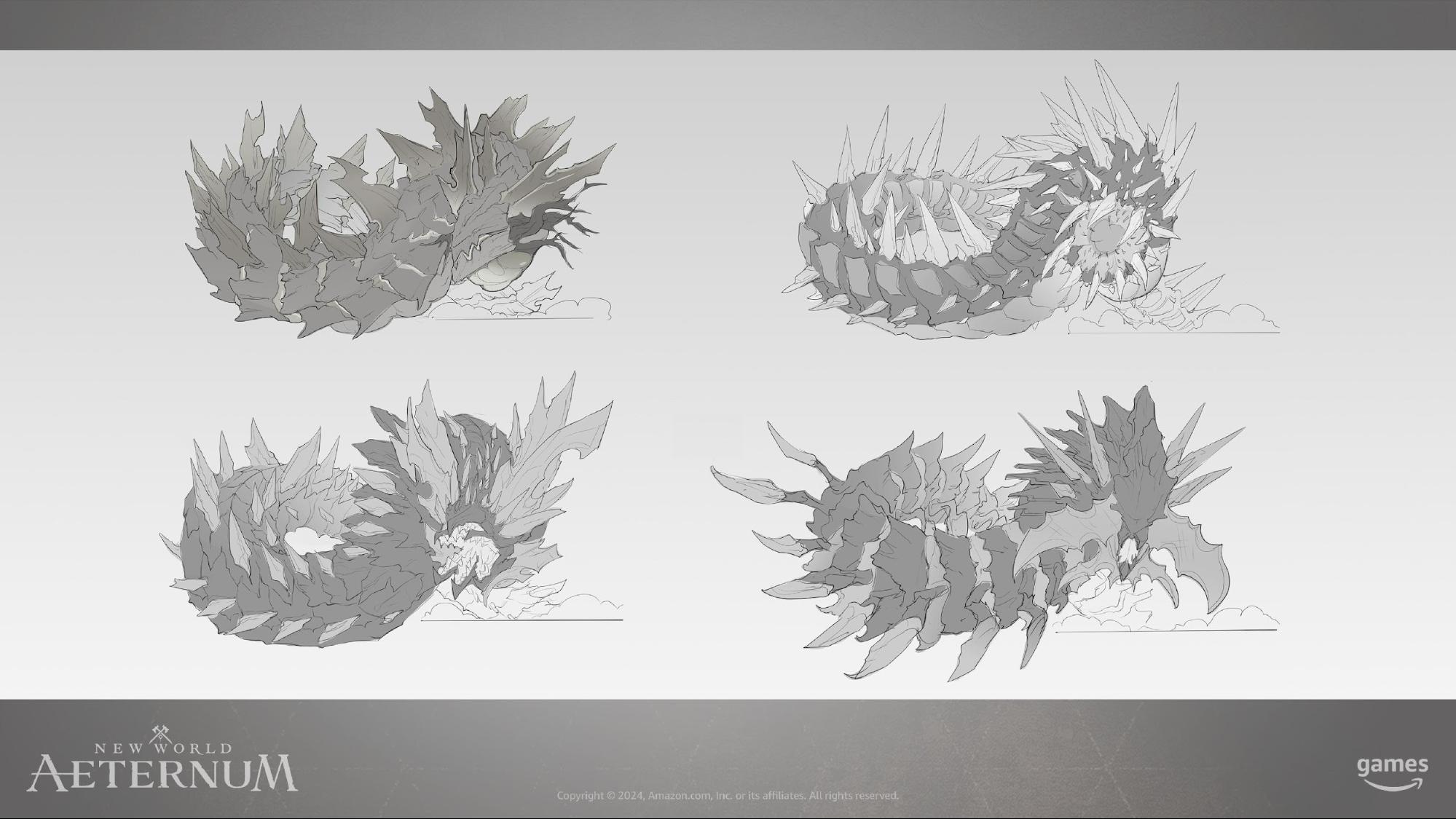
Visit the New World Aeternum news site to keep up to date on Amazon Games' new release. If you've been inspired by the team's work and want to create yourself, read our guide to the best digital art software and best drawing tablets.

Thank you for reading 5 articles this month* Join now for unlimited access
Enjoy your first month for just £1 / $1 / €1
*Read 5 free articles per month without a subscription

Join now for unlimited access
Try first month for just £1 / $1 / €1

Ian Dean is Editor, Digital Arts & 3D at Creative Bloq, and the former editor of many leading magazines. These titles included ImagineFX, 3D World and video game titles Play and Official PlayStation Magazine. Ian launched Xbox magazine X360 and edited PlayStation World. For Creative Bloq, Ian combines his experiences to bring the latest news on digital art, VFX and video games and tech, and in his spare time he doodles in Procreate, ArtRage, and Rebelle while finding time to play Xbox and PS5.
